Indiana senator proposes expansion of Deam wilderness, new national recreation area
- Oops!Something went wrong.Please try again later.
- Oops!Something went wrong.Please try again later.
Efforts to double the size of Indiana's only federal wilderness area and establish the state's first national recreation area were unveiled recently by Sen. Mike Braun, R-Indiana, during an outing to locations in Monroe and Brown counties.
The Benjamin Harrison National Recreation Area and Wilderness Establishment of 2023 would add 15,300 acres of land to the 12,472 acres already in the Charles C. Deam Wilderness and establish Indiana's first national recreation area. The recreation area would encompass about 29,382 more acres. All the land is part of the Hoosier National Forest, which covers more than 200,000 acres from just south of Bloomington to the Ohio River.
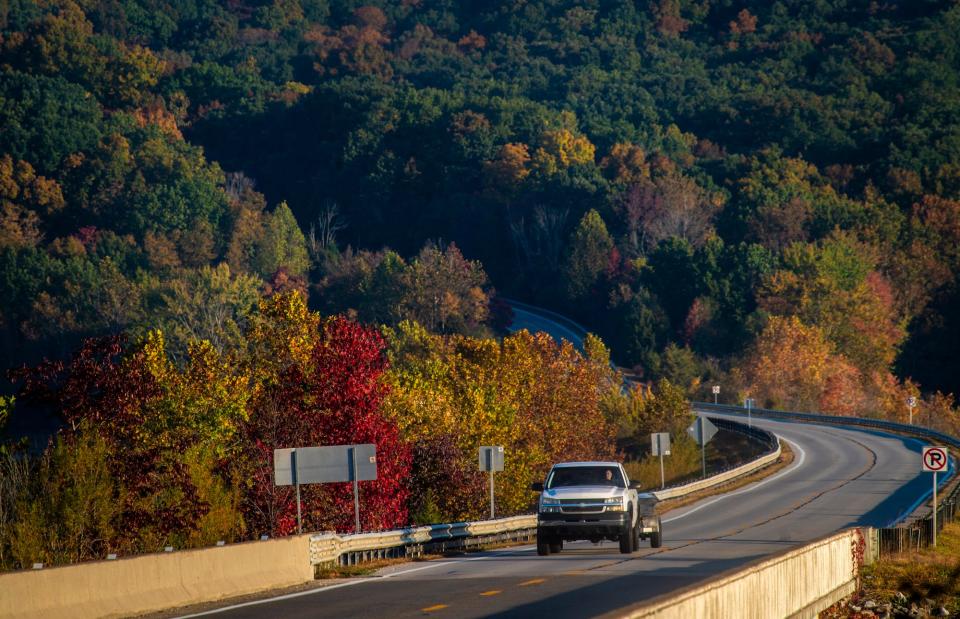
The details are contained in Senate Bill 2990, which Sen. Braun introduced to Congress on Sept. 28. Braun owns land near Jasper that borders another portion of the Hoosier National Forest. While in between meetings in Washington, D.C., on Thursday, Braun said he's been involved with forestry and land management on his property for years and he wants to provide people who don't have their own land more areas for public recreation in Indiana.
"We're blessed that we have some of the best in southern Indiana," he said of Indiana's forested landscape.
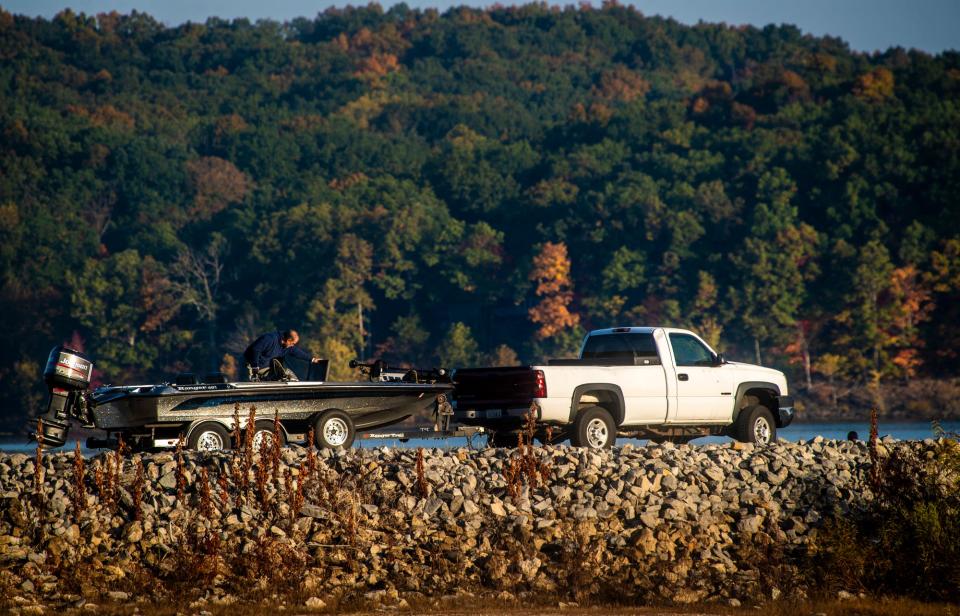
Braun said he believes the national recreation area will serve people who desire public land for recreational use, while the extension to the current Deam wilderness is something other Hoosiers want. He said he's trying to address "all interests" of Hoosiers, many of whom live in and around the Hoosier National Forest, which he called a "multi-faceted resource."
"We put a lot of effort in it to get it where it is," Braun said of SB 2990. He is trying to get a House sponsor, and is currently talking to Rep. Erin Houchin, R-9th District.
Braun expects broad support in Congress, stating, "a large proportion of people are going to be for it."
Senate Bill 2990 is now in the Senate Committee on Agriculture, Nutrition and Forestry. The bill will have to be approved by both the Senate and the House and then signed into law by the president before it takes effect.
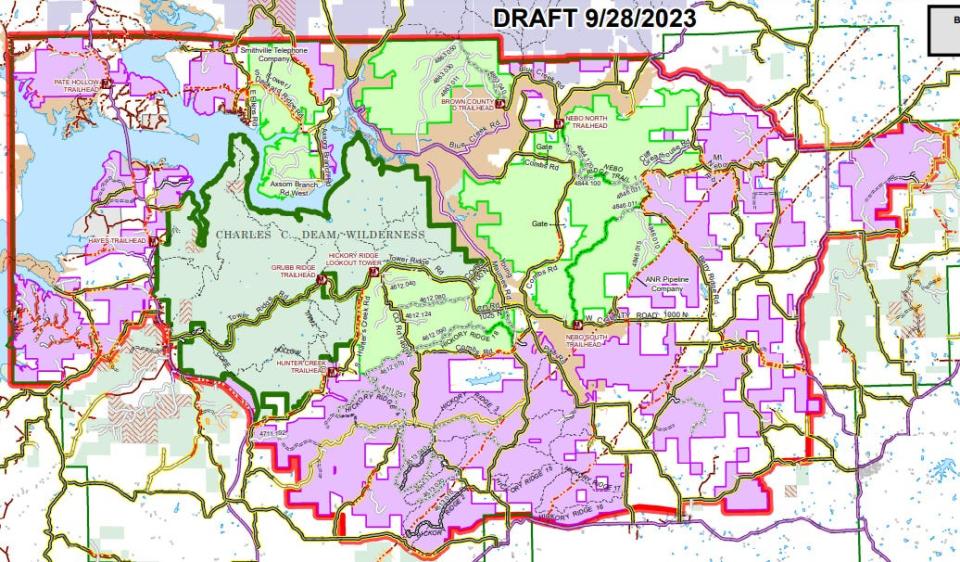
An ally: Indiana Forest Alliance
Jeff Stant, executive director of Indiana Forest Alliance, has been working on the proposed recreation area and wilderness extension with Braun for more than two years. Stant was part of the recent visit by Braun's chief of staff to the Hoosier National Forest which showcased the proposal for nearby residents and interested Hoosiers. An auto tour of several areas including Browning Mountain near Story in Brown County and portions of the forest in Jackson County were included.
When the Charles C. Deam Wilderness was first proposed, the level of opposition from people in the area was fierce, Stant said. The people living there had farmed those hills in Monroe, Brown and Jackson counties for years.
"There's a long history of having government use eminent domain," he recalled.
Beginning in the late 1970s, land that became part of Brown County State Park and also Lake Monroe was taken through eminent domain. Many people feared that would happen again and formed Concerned Citizens of the Nebo Ridge Area.
"The environmental community found itself facing intense opposition from this homeowner group," Stant said.
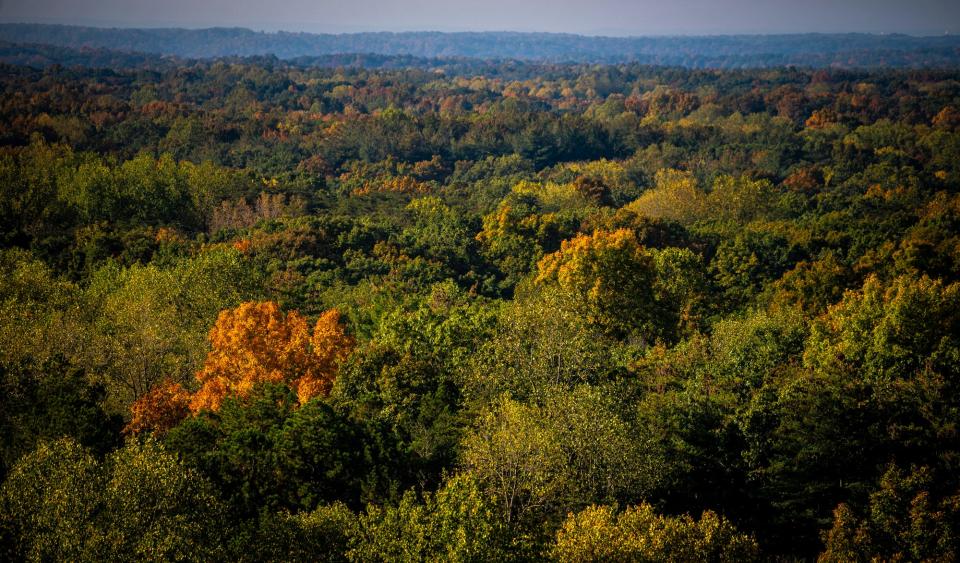
Even so, the Charles C. Deam Wilderness was established in 1982.
Now, Stant said, the level of opposition is much less, in part because of efforts to educate area landowners and ensure that private property is not included in the wilderness extension.
"There are no roads or houses in the (wilderness) addition," Stant explained. "Boundaries go up to the roads." As with the current Deam wilderness, access would be allowed to all private properties and cemeteries.
Wheeled vehicles are prohibited in wilderness areas, but the six mountain bike trails that are within the wilderness extension would have a 200-foot setback — 100 feet on each side.
Stant's main interest in the proposal is the land that would be added to the Deam wilderness. "I've been trying to save this area for my entire professional life," he said. Both Stant and A. Claude Ferguson, a longtime conservationist and a former supervisor of the Hoosier National Forest, had hoped to include the Nebo Ridge area in the original Charles C. Deam Wilderness. If approved, that area would finally become part of the wilderness.
Water quality an issue
The national recreation area would encompass most of the land that drains into Lake Monroe, protecting the water source for Bloomington and surrounding communities.
The Friends of Lake Monroe posted in one of its newsletters that the Senate bill is "an important step for those of us concerned about Lake Monroe water quality." The newsletter states, "We hope that in the coming months we will see this bill enacted and the plans for protecting our water quality put into action."
What is a national recreation area?
National recreation areas in the United States are lands near large reservoirs where people can swim, kayak, fish, boat and allow people to connect with nature. The recreation areas often include important natural and cultural features. There are currently 40 national recreation areas, managed by the National Park Service, Bureau of Land Management or the U.S Forest Service.
What is a wilderness area?
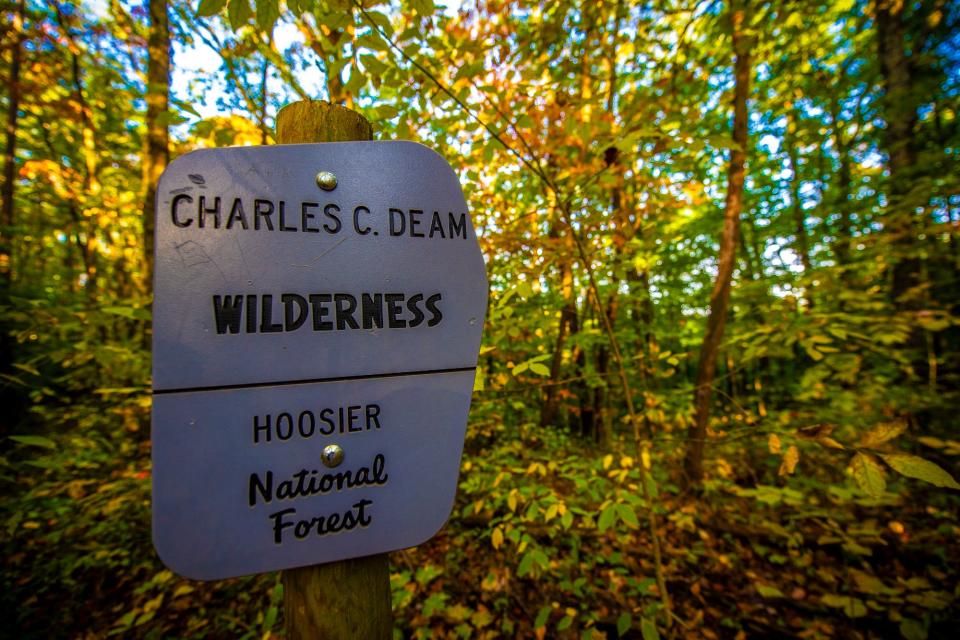
The Wilderness Act of 1964 was approved by Congress and established the basis for federal wilderness areas. The act defines them as "an area where the earth and its community of life are untrammeled by man, where man himself is a visitor who does not remain." The purpose is to protect and preserve natural ecosystems and wild areas, according to the U.S. Forest Service. The areas are there to also provide "opportunities for solitude and retrospective or primitive recreation."
While much of the western U.S. has land untouched by people, east of the Mississippi, those areas much more rare. The Eastern Wilderness Areas Act, passed by Congress in 1974, allowed inclusion in the National Wilderness Preservation System land that was no longer considered wilderness but could be designated as such to allow it to return to its wild state.
Designated wilderness areas prohibit all wheeled vehicles, from cars to bicycles, as well as all mechanized equipment. Motorized boats on Lake Monroe are prohibited from beaching along the shoreline of the Charles C. Deam Wilderness.
Who was Charles C. Deam?
Charles C. Deam was named Indiana's first state forester in 1909. His interest in botany started when he was a youngster growing up in Bluffton, where he was born in 1865. Deam discovered 25 new plant species, had 48 plants named after him and has plant specimens in Indiana University's Herbarium, or plant library. He wrote the legislation that helped form the Forest Classification Act of 1921, which helped ensure Indiana's private forests remained intact. He also wrote books, including "Trees of Indiana," "Flora of Indiana," and "Shrubs of Indiana."
Reach Carol Kugler at ckugler@heraldt.com.
This article originally appeared on The Herald-Times: Indiana's only wilderness in Hoosier National Forest may expand

